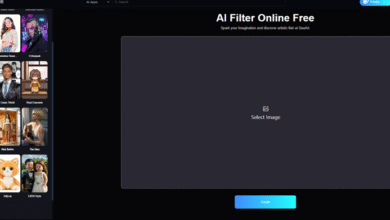Service Schedule Software for Efficient Fleet Management and Maintenance Planning

Service schedule software automates the process of setting appointments, assigning technicians, and managing service workflows. It helps businesses ensure the right technician with the right skills and parts arrives at the correct time, improving efficiency and customer satisfaction. This software is essential for optimizing schedules, reducing errors, and enhancing productivity in service operations.
By using service scheduling tools, companies can streamline dispatching, avoid scheduling conflicts, and provide real-time updates on job status. Many solutions offer mobile capabilities and customizable calendars to meet the specific needs of various industries, from home services to construction.
Choosing the right system depends on business size, technical requirements, and industry focus. The best software balances ease of use, automation capabilities, and value for money, making it a practical investment for service-based organizations.
Key Features of Service Schedule Software
Service schedule software improves efficiency by managing appointments, communicating updates automatically, and allocating resources effectively. These capabilities help businesses reduce errors, optimize workflows, and ensure timely service delivery.
Appointment Management
Appointment management allows users to schedule, modify, and track service requests with ease. The software often offers a calendar view showing upcoming jobs, technician availability, and customer details, which simplifies planning.
It typically supports real-time updates, preventing double-booking and minimizing scheduling conflicts. Businesses can assign technicians based on skills, location, and current workload to increase first-time fix rates.
Integration with customer profiles helps keep track of service history and preferences. Automated reminders and confirmation features reduce no-shows and improve customer satisfaction.
Automated Notifications
Automated notifications keep customers and technicians informed at every stage of the service process. These messages can include appointment confirmations, reminders, and updates about delays or changes.
Notifications are usually sent via SMS, email, or in-app alerts, ensuring timely communication. This reduces miscommunication and allows customers to prepare for visits or reschedule if needed.
For technicians, notifications alert them about new assignments, cancellations, or route changes, helping them stay organized. This functionality helps businesses maintain transparency and reduce customer wait times.
Resource Allocation
Resource allocation features ensure the right technician, equipment, and parts are assigned to each job. The software analyzes technician skills, availability, and location to optimize assignments.
It balances workloads to avoid under- or over-utilization of staff, which supports consistent service quality and cost control. Effective resource allocation can lower travel time and increase the number of daily appointments.
Some systems also track inventory levels, ensuring necessary parts are available before dispatch. This prevents delays caused by missing resources and improves operational efficiency.
See also: Why Regular HVAC Maintenance Saves You Money and Energy
Benefits and Implementation Strategies
Service scheduling software organizes tasks and resources to reduce downtime and errors. It provides clear visibility into schedules and workflows for better decision-making.
Productivity Enhancement
This software automates appointment booking and task assignments, reducing manual scheduling errors. It ensures the right technician with the necessary skills and parts is dispatched, optimizing workforce utilization.
Automated routing features cut travel time between jobs, increasing the number of daily service calls. It also integrates with inventory and billing systems, minimizing delays in documentation and payment processing.
Businesses gain real-time updates on job status and technician location, improving communication and coordination. This consolidation of information boosts operational efficiency and lowers labor costs.
Customer Experience Improvement
Customers receive timely service through optimized scheduling, minimizing wait times and rescheduling. Notifications and reminders reduce no-shows, helping maintain smooth workflows and satisfied clients.
Personalized service is enabled by matching customer needs with technician expertise and available resources. Clear communication channels between the office, technicians, and customers enhance trust and transparency.
Faster response times combined with accurate scheduling contribute to higher customer retention. Automated feedback collection helps identify and resolve issues promptly.




